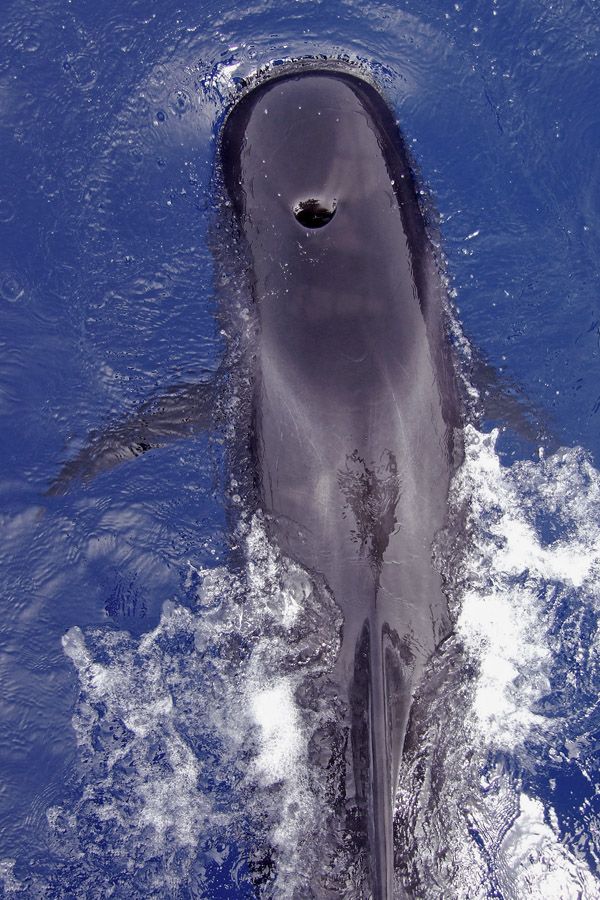
Our Nose – Not on the Face, but On Top of the Head
In contrast with all land mammals, our noses are not fixed in the middle of the face, but on the upper surface of the head. The Creator did it this way so that when we are swimming horizontally, our noses are on the highest part of our bodies. Our nose is actually more than a kind of snorkel that we use for inhaling oxygen. If we are not breathing, we hold our nose closed with a massive sphincter muscle. This, together with an elongated windpipe in the shape of a goose-neck, keeps water from coming through our breathing passages into our lungs. In contrast to every other kind of mammal, including humans, wehave no opening between the nasal opening and the oral cavity. This means that under water, we can stretch our mouth wide open without getting water in the air passages. Our nose is formed in a very complicated way, and just imagine that every kind of whale has its own nasal design. While the baleen whales have two nasal openings, the toothed whales have only one. You can tell by our spout whether it’s a baleen or a toothed whale. The spout is either divided into two streams, or only a cloud can be identified. In your children’s books, we are often portrayed with a beautiful fountain streaming from the top of our heads. That gives you a false impression, because our noses are not fire-hoses, but breathing organs. What you see when we blow is condensed water vapour, something like when you breathe out into frosty air. When we exhale, the gases are expelled through a small opening with considerable force. This generates a strong pressure increase in the air and when it hits the free outer air, our breath expands (you remember from physics: the more a gas expands, the more it cools). This causes the water vapour to condense into droplets. The cloud of water vapour is just as visible in the tropics as it is in waterswith icebergs.(...)
The sperm whale continues: Our Ear – A Stereo-Seismograph
* quotes from the book "If Animals Could Talk"









